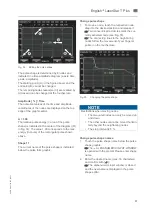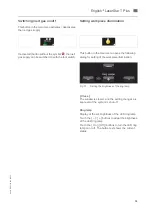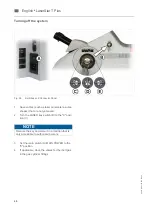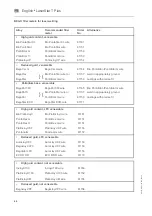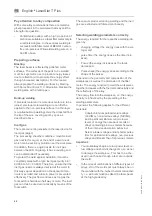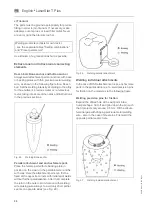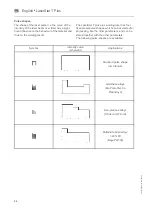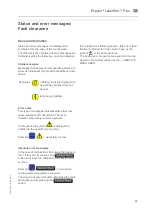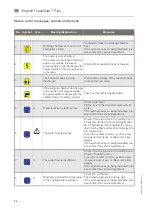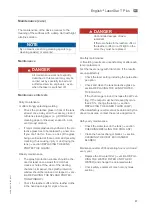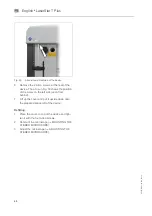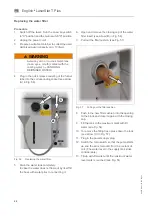
48
860
76
D
B
-en/
03
35
5.0
00
32
English
⋅
LaserStar T Plus
en
Case examples
The varied options offered by the laser in providing
solutions for dental welding work are described on
the basis of examples below. The methods
proposed can be applied analogously to many other
welding tasks.
Welding secondary crowns to partial dentures
Welding on entire surface with double-V seam joint
In the wax-up give the parts of the joint located
opposite each other a wedge shape so that a
double-V seam joint results when the cast objects
are joined on the model (see Fig. 41).
Fig. 41
Double-V seam joint
The beam angle should be approx. 60° in solid
places so deep penetration welding can also be
carried out. The two sharp edges should touch each
other.
Fix the parts at at least two points located opposite
each other. After that allow the filler metal to drip
spot by spot and fill the entire double-V seam joint in
this way. Begin at the deepest point of the seam and
apply the spot welds in individual layers alternately
on both sides of the seam.
Attention: If cracks appear next to the wire during
welding of the deepest layers, grind them and weld
them closed at a low energy level layer by layer,
otherwise the homogeneity of the weld is not
guaranteed.
Note: It is advantageous initially to weld on the
precious filler metal on the entire surface on the
non-precious metal side in order to produce a buffer
layer. In this way the gold wire flows better during
further welding and better mixing takes place.
Without this gold buffer layer the laser beam may
generate cracks in the non-precious material which
would have to be ground and filled again in any
case.
Box-peg joint
Prepare the wax-up with a peg at the precious-metal
outer crown and with a box on the partial denture
part (Fig. 42). The gap between the workpieces
should be kept as minimal as possible.
Fig. 42
Box-peg joint
Welding on the model begins with tacking while
initially fixing the two parts with opposite spots at the
same time. After that weld the joints together at a
moderate energy level with considerably (approx.
80%) overlapping spots. To avoid stress, always
place only partial seams on each side until the joint
is complete.
Welding parameters (basis for own tests):
- see the separate tables "Setting combinations"
and "Preset parameters".




